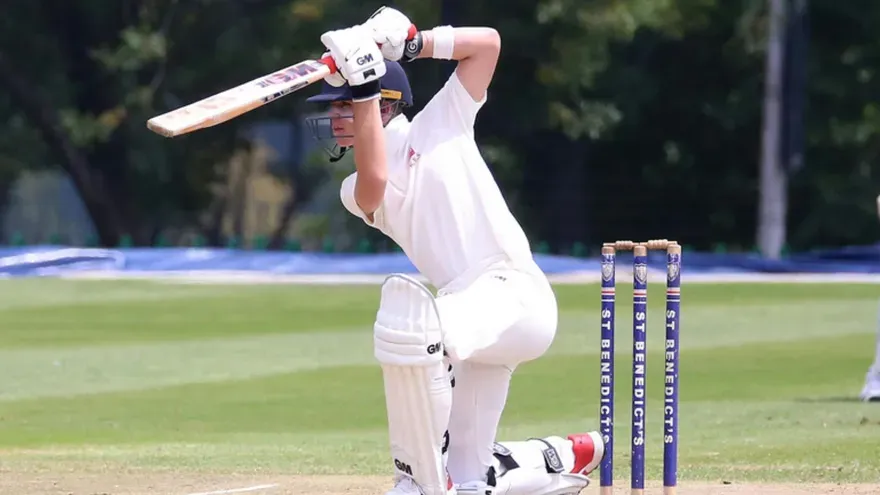Cricket is not an easy game for batsmen to face the circular object known as the leather ball. At a very high velocity thrown by the bowler but if a batter loses sight of the ball during batting, he is definitely in trouble; sometimes, the batter gets injured. So, watching the ball is the most difficult work for the batsman. But usually, a human being faces some issues when watching a ball that travels around 90 miles per hour. We need a clean background to see such a high velocity object. So, the clean background present in front of the batsman behind the boundary rope is known as sightscreen.
Sight Screen is locked just behind the wickets beyond the boundary rope. It prevents distractions and makes it more comfortable for the batsman to recognize the leather cricket ball while batting. Sight screens are built with two different parts. One was the frame which is made of wood or any other metal. Another one is the cloth which is attached to the frame and hung. However, some stadium managements use polycarbonate slots in place of fabric.
The batsman uses the sight screen in cricket to see the ball with high concentration without any distraction. Generally, A ball with a circumference of only 9 inches did throw towards a batter at a speed of 90 mph. It is highly challenging for a batter to see it as usual. We already discussed this at the beginning of this article. So, a batter desperately needs a transparent background to see such a cricket ball accurately. We all knew that spotting a black dot on a full white paper is more accessible than spotting a black dot on a different colored background. That is why a sight screen did place beyond the boundary rope in front of the batsman.
The full color of this sight screen in cricket should be the same while a batter is batting. Also, the spectators should not go either in front or near the sight screen because the batsman cannot concentrate properly on the ball if somebody moves near the sight screen in cricket. So, no one must move in front of the sight screen beyond the boundary rope while the batter is ready to face the ball. If any disturbance occurs around the sight screen, the batsman immediately stops the bowler and complains to the umpire about the problem. We already discussed that the color of the sight screen should be plain and the same all over the frame. However, each ground has two sight screens. One was in front of the batsman, and another one was behind the batsman. Because bowling is not always done from the same end. The bowling end is changed for each over. We already discussed that the color of the sight screen should be plain and the same all over the frame. However, each ground has two sight screens. One was in front of the batsman, and another one was behind the batsman. Because bowling is not always done from the same end. The bowling end is changed for each over.
The sight screen is black in limited-overs cricket (ODI & T20) because the white ball looks great on a black background. The sight screen is white in Test cricket because a red or pink ball looks good on the white background. However, one sight screen uses the batsman during the match, and another displays ads behind the wicket-keeper.














